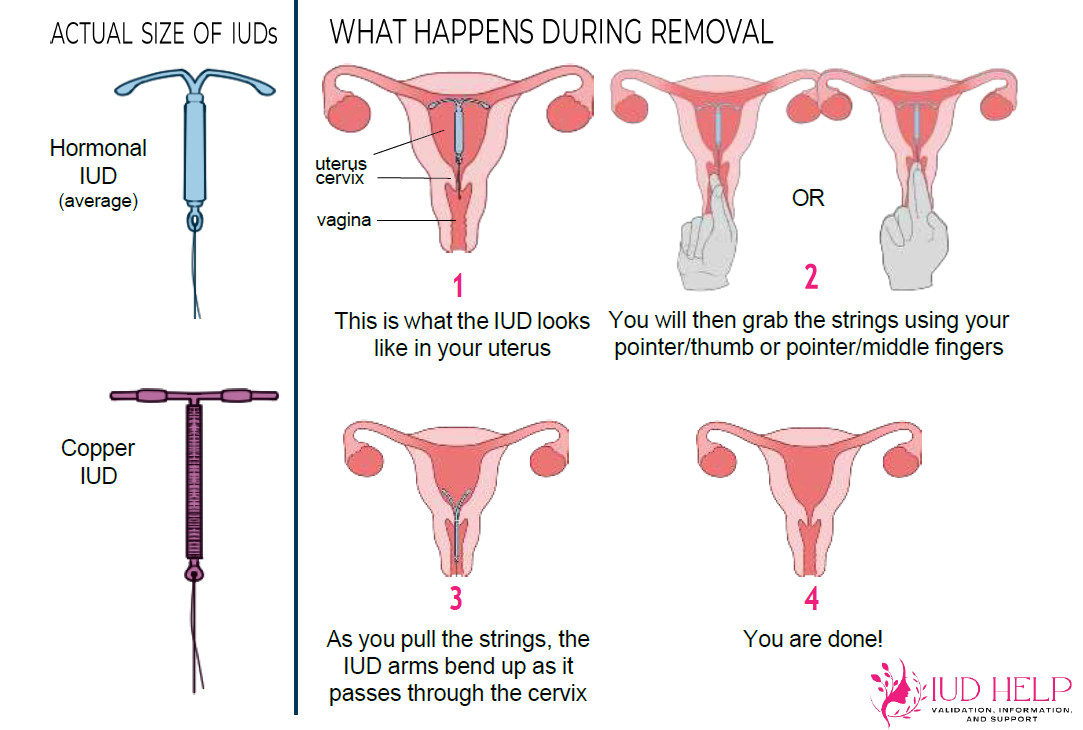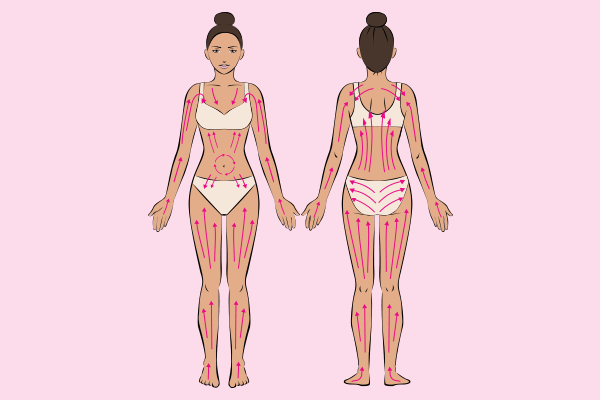How to Remove your IUD by Yourself
It is SAFE and OKAY to remove your IUD at home for ANY REASON.
While it may seem intimidating, this page will guide you through the process, answer common questions, and offer helpful tips. You can also download this page in an easy-to-print sheet. Please read through the entire page before you start.
How to Remove Your Intrauterine Device (IUD) By Yourself
You have the right to have your IUD removed at any time, even if you just got it inserted and decide you do not want it. You can remove your IUD before it expires if you want to get pregnant or if you just do not want it inside of you anymore for any reason.
If you are removing your IUD because it has expired, it’s worth noting that once it’s expired, it will stop preventing pregnancy.
- The copper IUD Paragard is labeled for 10 years of use, but research shows it works up to 12 years.
- The hormonal IUD Mirena is labeled for 8 years of use.
- The hormonal IUD Liletta is labeled for 8 years of use.
- The hormonal IUD Kyleena is labeled for 5 years of use.
- The hormonal IUD Skyla is labeled for 3 years of use.
If you are removing your IUD because your provider is encouraging you to keep it in longer or will not remove it for you, consider getting a new provider who respects your desires. In the meantime, you can take out your own IUD. Self Removal Instructions can be found here.
Frequently Asked Questions (FAQ)
- Is it safe to remove my IUD myself?
Yes. Removing your own IUD is just as safe as removal in a provider’s office. Your provider removes the IUD in the same way by pulling on the strings, they just use forceps instead of their fingers. - Will it hurt?
It might, but any pain should be brief, and at the end of removal as the IUD is almost out. You can take 600mg of Ibuprofen 30-60 minutes before you remove it to help with cramping. - What if I start and want to stop?
You can stop at any time; however, the IUD will no longer protect you from pregnancy once you begin removing it. If you stop while feeling pain, at that point the IUD is most likely in your cervix, and another good pull should get it out. - What if I cannot feel the strings?
The strings may be wrapped around your cervix. Try moving your fingers further into your vagina in a circular motion around your cervix. If you still cannot feel the strings, they may have been cut very short during insertion. If you cannot feel the strings, you will need to go to a provider to have the IUD removed. - Can I use something other than my fingers to grab the strings?
No. Do not put anything other than your fingers (in a latex glove if needed/desired) inside your vagina. Putting anything else into your vagina can lead to injury, complications, or infection. - Should I remove my IUD at a specific time during my monthly cycle?
It does not matter what time of the month you remove your IUD. During menstruation, the blood may make the IUD strings a bit more slippery making it more difficult.
How to Remove Your IUD
- Prepare Yourself:
- Remove your pants and underwear.
- Wash your hands thoroughly with soap and warm water.
- Find a Comfortable Position:
- Choose a position where you can comfortably reach inside your vagina. Options include:
- Sitting at the edge of your bed with your legs on a chair in front of you.
- Sitting on the edge of your toilet.
- Lying in the butterfly position on the ground, with your feet against the wall like in stirrups.
- Standing with one foot on the toilet or squatting.
- Standing in the shower with one foot up.
- If you feel uncomfortable or find it difficult to remove the IUD yourself, ask a trusted partner or friend to help. Ensure they wash their hands thoroughly with soap and warm water before assisting.
- Locate the Strings:
- Insert two fingers into your vagina, using your pointer finger and thumb or pointer and middle finger.
- Move your fingers in a circular motion to feel for the strings of your IUD near the top/back of your vagina, where the cervix is. Your cervix will feel like a hard bump, similar to the tip of your nose.
- The IUD strings may be slippery. If gripping is difficult, it may help to wear a new, clean surgical glove (like the ones used by doctors and dentists). Do not attempt to douche or wipe off the strings with any towels or tissues.
- Remove the IUD:
- Once you have a good grip on the strings, take a deep breath in and pull on the strings. Coughing while pulling may help distract you from the feeling.
- You may need to breathe, cough, and pull multiple times, readjusting your finger position on the strings to get a better grip.
- If you experience pain, stop and seek help from a medical professional.
- After Removal:
- Your IUD is out! Ensure your IUD is fully intact (see images below). If any part is missing, see your provider.
- You can dispose of the IUD in a regular trashcan.
General Tips:
- Take 600mg of Ibuprofen 30-60 minutes before removal to help with cramping.
- If you feel uncomfortable or find it difficult to remove the IUD yourself, ask a trusted partner or friend to help. Ensure they wash their hands thoroughly with soap and warm water first.
- Seek medical help if you experience any issues during or after the removal process.

Guides, Fact Sheets, and Handouts
Seed cycling is a natural approach to hormone balance that involves eating specific seeds at different phases of your menstrual cycle. This fact sheet provides insights into the benefits and practical steps of seed cycling, facilitating its integration into your daily routine. To learn more about seed cycling, visit our Seed Cycling Web Page. or download our Seed Cycling Fact Sheet for additional tips and information.
Removing an intrauterine device (IUD) at home is not recommended for everyone, but for those who choose this path, it’s important to understand the process and potential risks. This guide is designed to provide you with the necessary information to safely remove your IUD on your own, especially if you don’t have access to a healthcare provider who is willing to do it for you.
Dry Brushing for Detoxification Handout
Dry brushing is a simple, ancient practice that involves brushing your skin with a dry, stiff-bristled brush to promote detoxification and overall well-being. This handout provides you with the benefits, steps, and tips to incorporate dry brushing into your daily routine.
We improve our products and advertising by using Microsoft Clarity to see how you use our website. By using our site, you agree that we and Microsoft can collect and use this data. For further details, please refer to our comprehensive Privacy Policy.




